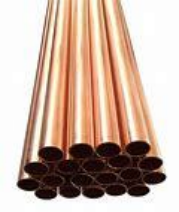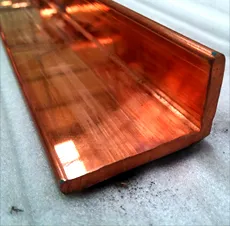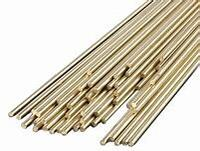1. Introduction
In the past 48 hours, a major infrastructure project in Texas announced the adoption of copper bonded earthing rods for its new data center campus—a move driven by rising concerns over lightning protection and grid stability amid intensifying storm activity. This real-world decision underscores a broader trend: copper rod isn’t just raw material—it’s a mission-critical component in advanced engineering systems.

While most people associate copper with plumbing or wiring, its role in niche applications like precision welding and high-integrity grounding is where its true value shines. From copper earth rods anchoring skyscrapers to copper brazing rods fusing delicate HVAC components, this versatile metal enables reliability where failure is not an option.
2. Copper Rod in Electrical Earthing Systems
2.1. Why Copper for Grounding?
Earthing—also called grounding—is essential for diverting fault currents and lightning strikes safely into the earth. Copper’s unmatched electrical conductivity and resistance to corrosion make it the gold standard for this role.
Pure copper rods, often called copper earth rods or ground rod copper, offer decades of service life. However, due to cost, many engineers now specify copper bonded steel or copper clad steel ground rods. These combine a steel core for strength with a thick outer layer of copper for conductivity and corrosion resistance.
- Copper bonded earthing rod: steel core with ≥250µm copper layer
- Copper clad earth rod: metallurgically bonded copper sheath over steel
- Solid copper rod: used in highly corrosive or high-current environments

2.2. Pricing and Sizing Considerations
The earthing rod price varies significantly based on material. Solid copper rods command a premium, while copper bonded options offer a cost-effective middle ground. A standard 5/8″ x 8ft copper bonded ground rod typically costs 30–50% less than its solid copper counterpart.
For large installations, specifiers also consider copper strip for earthing—especially flat copper strips like the common 25x3mm size. The copper earth strip 25x3mm price is often compared against rod-based systems when designing substation grids or telecom grounding mats.
3. Copper Rod in Precision Welding and Brazing
3.1. Copper-to-Copper Joining Techniques
When repairing or fabricating systems involving copper tubing—like air conditioning copper pipe or refrigeration lines—specialized filler rods are essential. Standard steel welding rods won’t work. Instead, technicians rely on copper welding rod or copper brazing rod formulations.

Copper to copper brazing rods, often phosphorus-copper alloys, enable strong, leak-free joints without flux in many HVAC applications. For higher-strength needs, copper to copper welding rod options with silver or tin additives are used.
Key products include:
- Copper rod for welding: pure or alloyed rods for TIG/MIG
- Welding rod copper: general term for filler material
- Copper brazing rod: low-melting-point alloys for capillary joints
3.2. Compatibility with Copper Pipework
Modern aircon copper pipe systems—whether 15mm copper tube or 22mm copper pipe—require precise joining methods. Resoldering copper pipe joints without removal is common, but when structural integrity is compromised, welding with a copper rod becomes necessary.
Technicians must match the rod to the base metal. Using a copper alloy strip or beryllium copper strip as filler can enhance joint strength in high-vibration environments like industrial chillers or marine HVAC systems.
4. Material Variants and Market Trends
Beyond rods, related copper forms play supporting roles. Flat copper strips—such as 1mm copper strip or nickel plated copper strip—are used in busbars, grounding straps, and EMI shielding. Flexible copper bus bar designs often integrate thin copper strips for dynamic electrical connections.
Meanwhile, scrap recyclers frequently ask about the best way to strip copper wire. While burning copper wire for scrap is dangerous and illegal in many areas, mechanical strippers offer a fast way to strip copper wire safely. Stripping wire for recycling remains profitable, especially with rising copper ingot prices.
For those sourcing materials, queries like ‘copper strip near me’ or ‘copper rod price’ reflect ongoing demand. Prices fluctuate with the LME, but copper round bar and round bar copper remain staples in fabrication shops.
5. Conclusion
From anchoring megawatts of electrical infrastructure with a copper clad steel earth rod to sealing a micro-leak in an air conditioner copper pipe with a copper brazing rod, the copper rod proves its worth in high-stakes, specialized roles. Its blend of conductivity, durability, and versatility ensures it remains irreplaceable—even as engineers explore alternatives. Whether you’re specifying an earthing system or repairing copper pipework, choosing the right copper rod variant isn’t just technical—it’s foundational to safety and performance.
Our Website founded on October 17, 2012, is a high-tech enterprise committed to the research and development, production, processing, sales and technical services of ceramic relative materials such as Copper. Our products includes but not limited to Boron Carbide Ceramic Products, Boron Nitride Ceramic Products, Silicon Carbide Ceramic Products, Silicon Nitride Ceramic Products, Zirconium Dioxide Ceramic Products, etc. If you are interested, please feel free to contact us.

